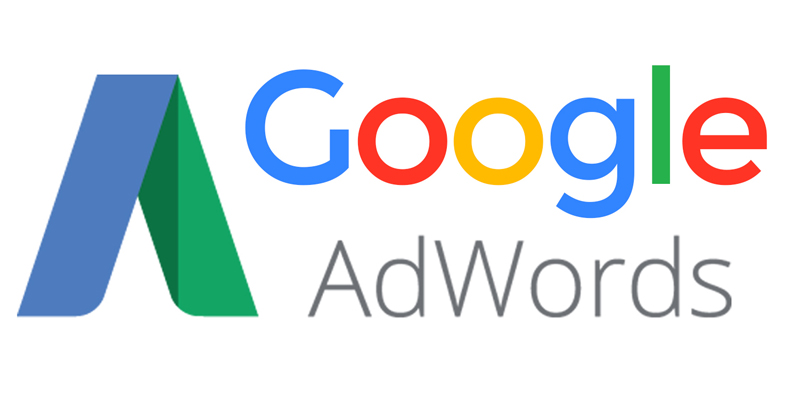Does your Business Needs Google AdWords? [an Ultimate Guide]
1. Reach Your Customer When They Want Your Stuff
Any business, regardless of size, wants to be found on the first page of Google. Getting seen by customers at the exact time they are looking for your information, products, services, deals or location is intent marketing – and it’s profitable.
But, as a small business, you’re competing with career long, experienced, motivated SEO experts to get those coveted organic top ten search results.

With Google AdWords you have an edge in getting your message viewed by your market, exactly when they’re searching for your specific product, service or offers.
2. Reach Your Local Customer
AdWords gives you location targeting options. So, if you’re a locally based business, (such as a neighborhood restaurant), a regional company (such as a state bank), or even an e-commerce site (with, say, country shipping restrictions), you can geo-target to get seen by your consumer – and you’re not wasting ad dollars on those who aren’t.

AdWords enables you to easily target countries, areas within a country, and radius targeting (to show your ads to people within a certain distance to your business). You can exclude locations, too, even in your proximity targeting.
Excluding locations brings your ROI up, by lowering costs and targeting more precisely.
Here’s an example of radius targeting around the “Statue of Liberty”, excluding the 229,000 reach of New Jersey.

You can target by geo-based demographics, such as income level. So, if you’re selling luxury goods, for example, you can target the top 10% income earners in your specified area.

3. Show your Location
By using Google Places, in conjunction with AdWords, you can show a map of your bricks and mortar shop with your ads.

The easier you make it for customers to find you, the more likely they’ll walk in, or click through to your website.
4. Show Your Contact Information
You’ve probably seen these on a few ads: ad extensions.
Ad extensions let businesses enhance ads with phone numbers, an address, app downloads, site landing page links, reviews, previous page visits and lots more. They generally show up in blue, just below your ad description.
By including more contact information in your ads, you make it way easier for your potential customer to connect with you.
Ad extensions don’t cost anything more to include in your ad. But you are still charged for clicks on your ad and other interactions with your extensions. For example, if someone clicks on your phone number to call you directly from your ad extension, you’ll be billed for this paid conversion. (Yup, Google can track clicked phone calls on mobile, tablets and desktops.)
If you’re a restaurant, for example, you can show your local address, and include links to specific menu pages, offers and other specific landing pages on your website. Here’s how a coffee chain uses them:

Tim Hortons adds their nearest address. They link to their “nutrition” “coffee” “Tim Card offers” and “location” pages on their website, so people can click directly through for more information.
5. Highly Targeted Searches
Keywords, keywords, keywords. This is what Google AdWords is known for.
As a small business, use the right keywords, that are optimized for high quality scores, and target your customers, products, offers, location and more.
The more targeted your keywords (and keyword phrases) are, the better Google will rank your ad. You’ll also reach a lot more consumers, who want exactly what you have right now.
If you’re using Google AdWords directly, be sure to research through suggested keywords for every ad group you create. Some Google ad providers, like In-House Graphics Inc., offer to do the hard work for you – by choosing the most optimized, targeted keywords for your ad group campaigns.
Here’s an example of suggested keywords from an online shoe store ad:

Use the opportunity to think like your customer, and choose words they’re searching for. You can set up different keywords for each of your ad group campaigns, too. And, you can change your words at any time to keep optimizing your reach.
6. Follow Your Customer with Retargeting
You’ve seen it, I’m sure. You visit a site, stay on it for a while, and then leave. But then you keep seeing ads for the company, or even the product page you were on. That’s retargeting.
With Google Adwords, if an interested customer has visited your website, they get a cookie from a code you’ve put on the backend of your site. When they leave your site, you can target your ads to follow them on the Google Display Networks, or Google search.

You pay extra for it, but it can really work to increase sales. Think about it – those people were interested enough to come visit your site. You can get seen by them again – and then again and again – while you’re still on their mind.
For example, say you have a baby products store. An interested parent-to-be clicked on your ad, and visited your landing page for strollers. They picked up your Google AdWords cookie. When they visit, say, a popular parent blog site (who are part of the Google Display Network), they can see your ad for strollers again. And so on.
It is a more advanced marketing tactic from Google. You can also retarget with software like Adroll, or Google ads with integrated retargeting software – like Wishpond.
7. Reach Your Mobile Customer – Where They Are
Your customer might be right outside your door, when they’re searching for your products or service.
Google AdWords gives you loads of mobile optimization options. You can target both text ads and image ads.
So, for example, if you market for a local coffee shop, mobile ads are a perfect fit. Your customer might be looking for their caffeine fix, while they are walking through your neighborhood. They search for places nearby. Your mobile optimized ad shows up first. You get a new customer in your door.

In your campaign Settings, you can leave your Devices on the default of “All”. This targets all types of devices. If you want to target more heavily on mobile users, you have this option too. Here’s a screenshot of the device choices you have if you want to show your ad more on mobile devices:

8. Choose Where your Ad is Seen
Google has tons and tons of ad partners. You’ve probably read a blog in your niche, and they have ads. More than likely, they are part of the Google Display network.
What does that mean for you? Well, it makes it easy for you to advertise on popular niche blogs – where your customers are.
You can track your results and even exclude sites that aren’t performing as well as you’d like.

I’d suggest that if you’re just starting out on Google AdWords, you use the Search and Display option – you get a broader reach. As you get used to how AdWords work, and you’re seeing an increased result in your click throughs, then narrow an ad campaign to the Display Network only. Monitor your results, and improve your ads as you go.
9. Get Measured Results
Hey, you’re getting the power behind Google Analytics to track your results.
Google AdWords gives you tons of customizable options to track and measure all of your campaigns, in one dashboard.
You can, for example, set and track your own goals for:
- Return on Investment (ROI)
- Traffic to your Website
- Brand Awareness
- Sales and Conversions
You can also measure the results of each of your ads within your ad groups. You get find out metrics like:
- What keywords are performing the best
- What headlines get the best click-through rate
- The times your ads are best performing
- And so on and so on

You can connect your website Google Analytics too.
Yeah, you get great metrics from Google. And, you can make your results reports as simple or or complex as you want. So, for people who don’t want to spend all day sorting through ad data – that’s ok too!
10. Control Your Own Budget
If you’re a small, local business, you may be more familiar with offline advertising methods. If so, you’re likely paying a set fee for each ad you publish or run. And, you’ve likely used to signing a contract too, to run x number of ads for x amount of money.
With Google AdWords, you can set your budget for each ad you run – and you can change it whenever you want. If an ad is performing really well, you can increase your results by increasing your ad spend.
You get to set your daily budget, which is what you’re willing to spend per day per ad.

Note: Your daily cost is based on a daily average per month, so don’t be alarmed if yours varies from day to day.
I’d recommend starting out with a budget of $20-40 per day. When your ad is live, track it to measure your results. Adjust your budget based on your ads’ ROI – or whatever your particular objectives are for your campaign.
11. Run Multiple Campaigns for Your Marketing Needs
A really cool thing about Google Ads is that your can run a whole bunch of different ad campaigns, for a whole bunch of your marketing objectives.
Let’s say you have an event planning business. You want to market your services for:
- Wedding planning
- Corporate events
- Fundraisers
You could set up 3 different marketing campaigns – one for each of your targeted services.
You can then set up multiple ad groups for each campaign. In your ad groups, you can target with different keywords.
For example, in your “Wedding planning” campaign, set-up 3 ad groups to target:
- Wedding dresses – and related keywords
- Honeymoon destinations – and related keywords
- Pre-nuptial lawyers – and related keywords
Then you can make 2 ads for each ad group, so that you can A/B test to find which ad performs best.
Okay, this may seem a bit complicated at first. But, once you get the hang of it, it’s actually quite cool and it gets you results.
12. Continuously Improve Your Results
Unlike any offline advertising you’re doing, it’s very simple to monitor your real ROI on Google AdWords. It’s also pretty simple to tweak your ad copy to get better results, and improve your profits.
Conclusion
If you’re in business these days, you’re marketing online. It’s the way to reach your customer, drive traffic to your store, and ultimately increase sales. Google AdWords needs to be a part of your online marketing plan.


